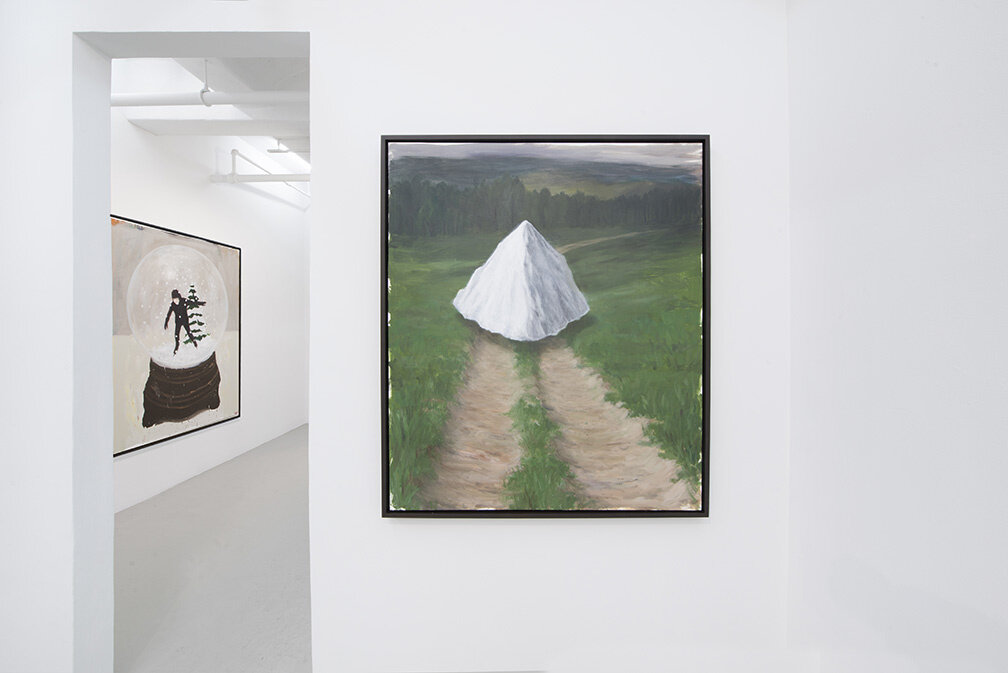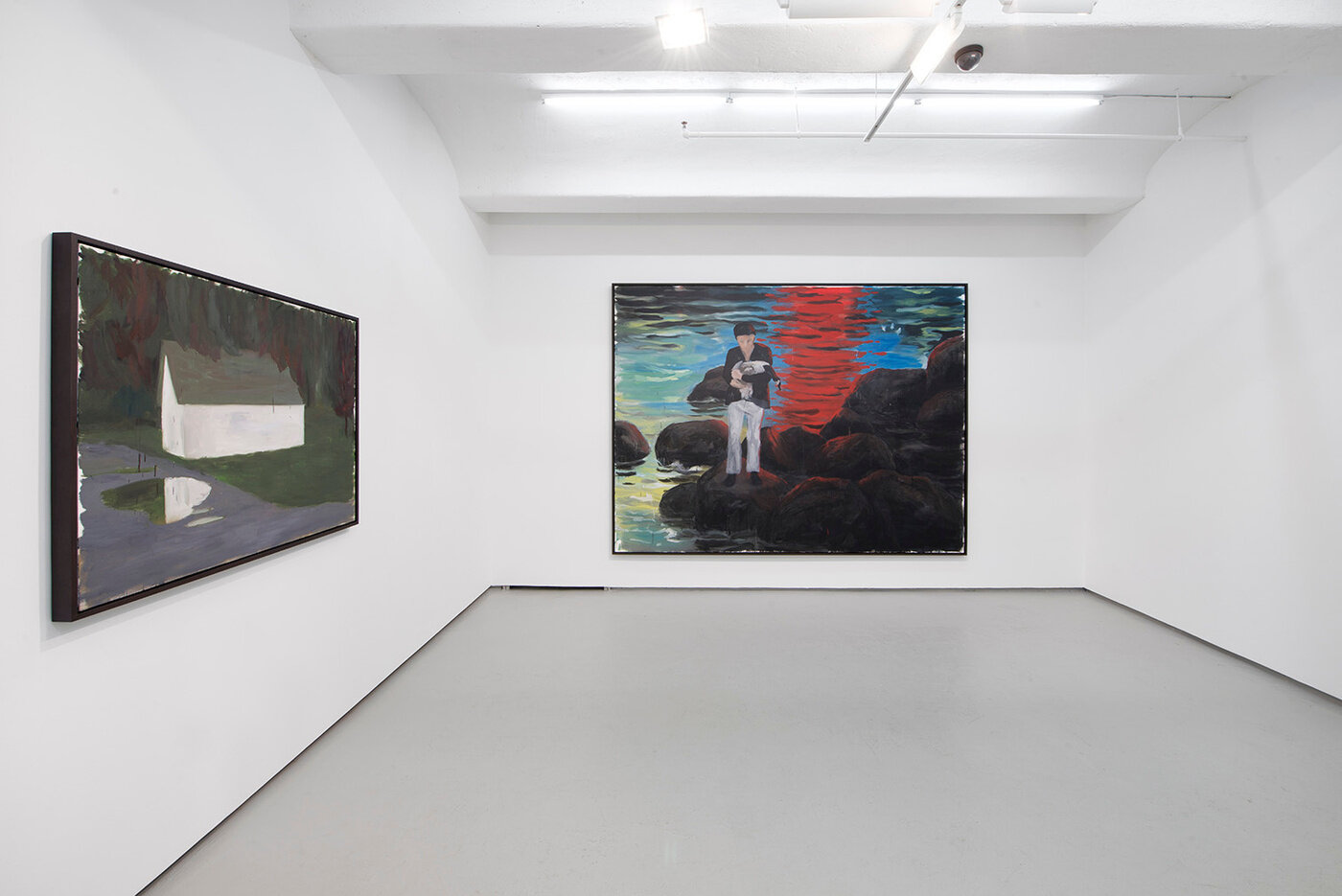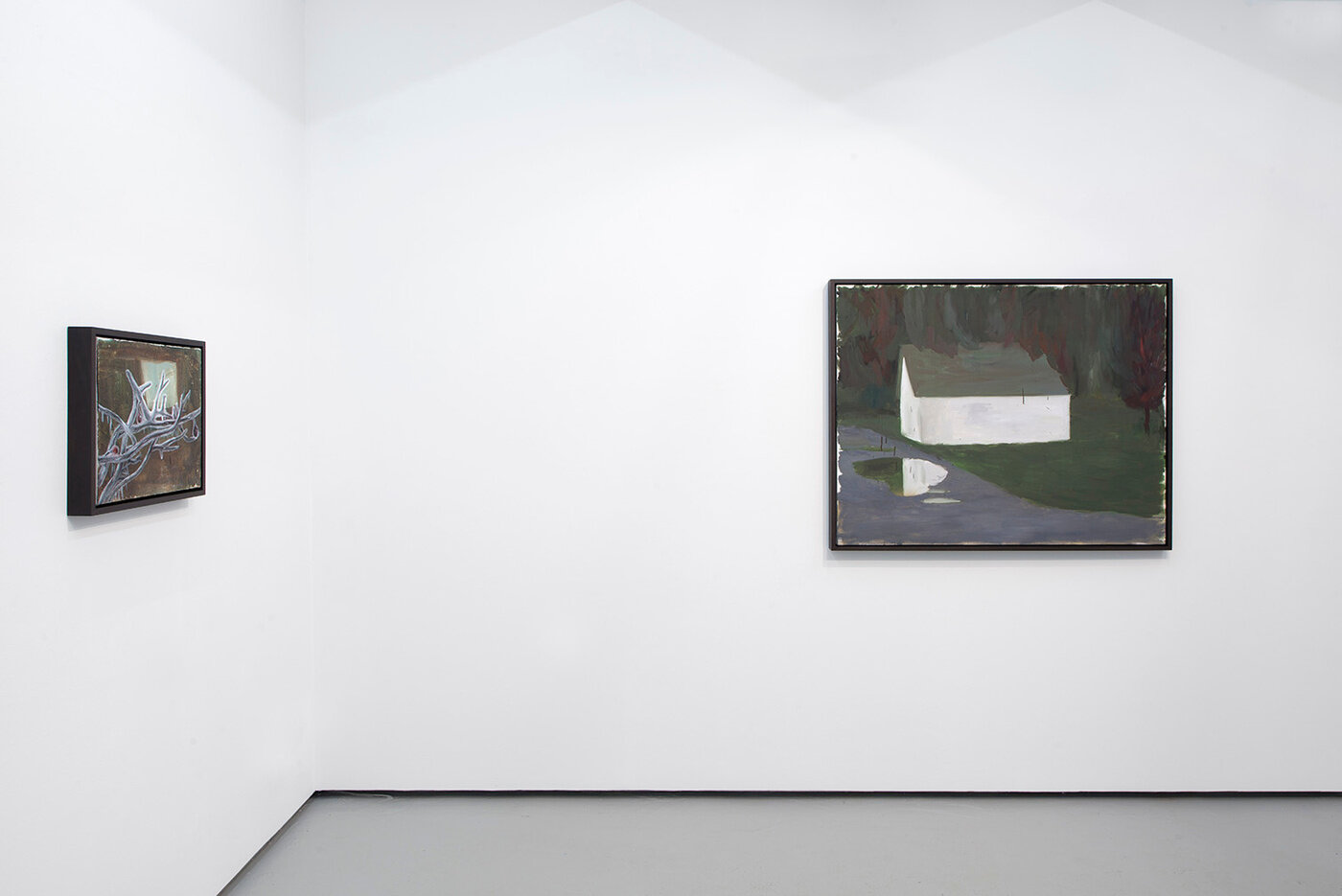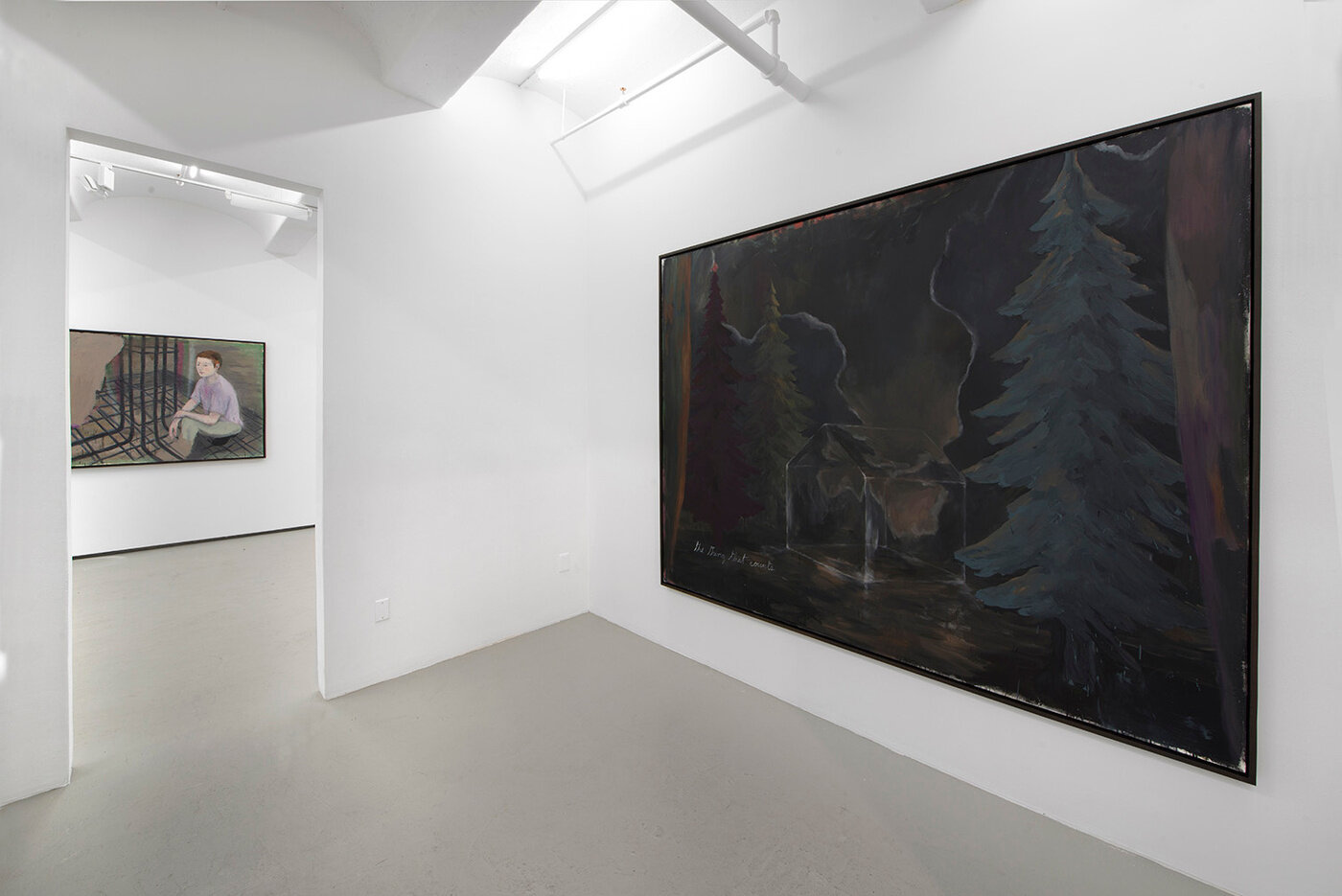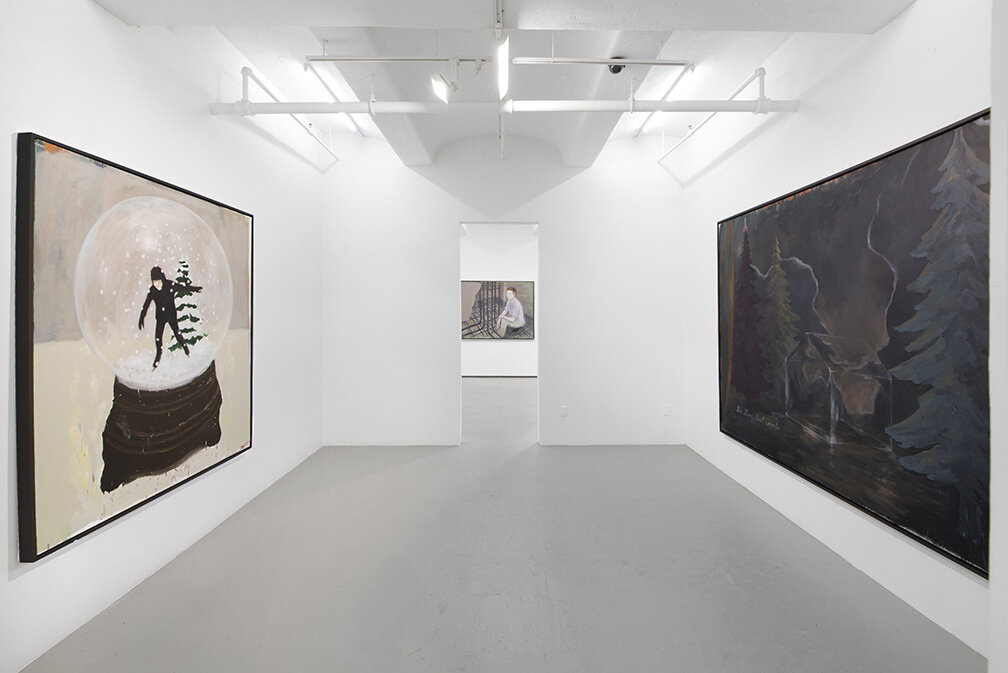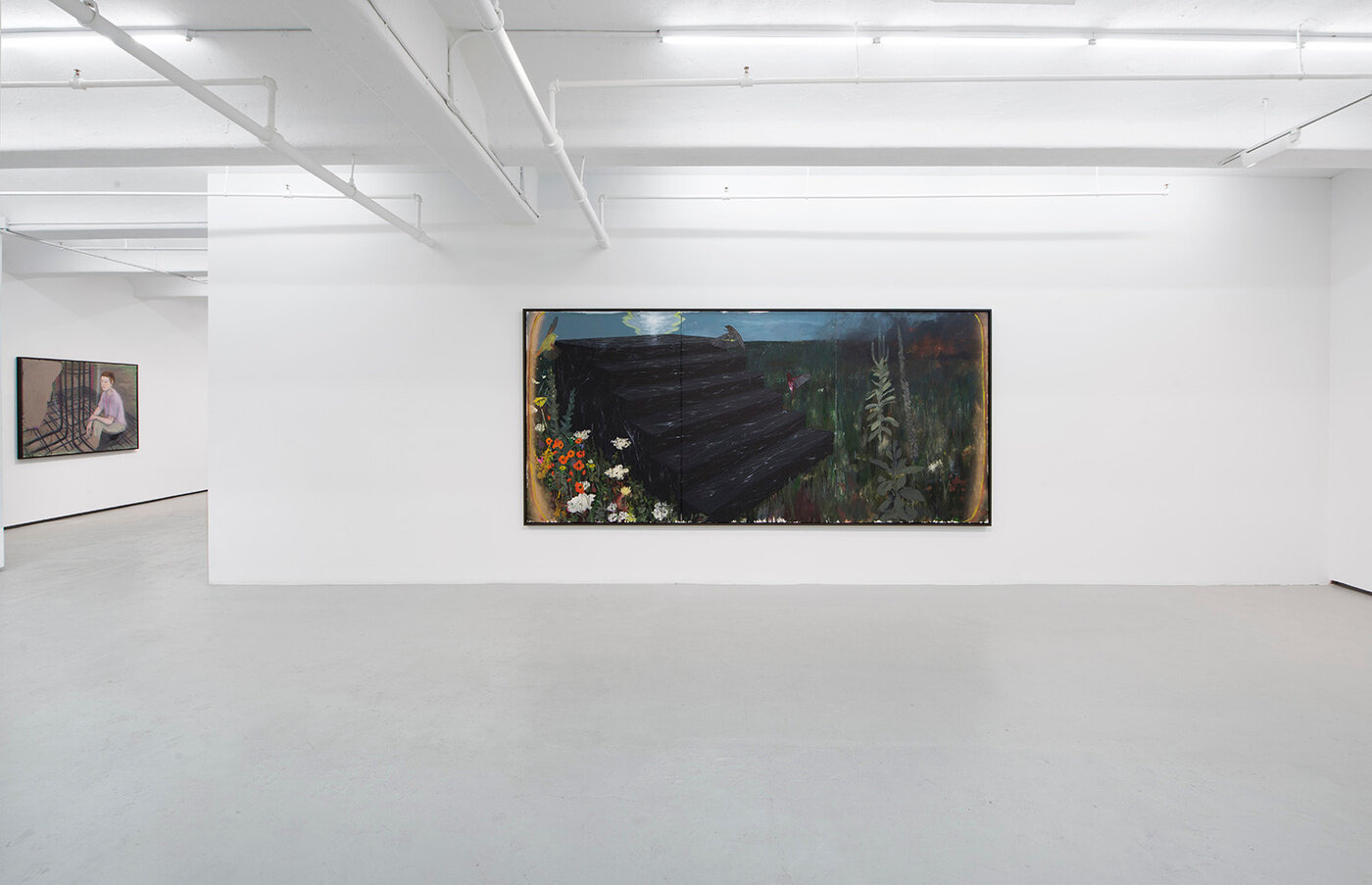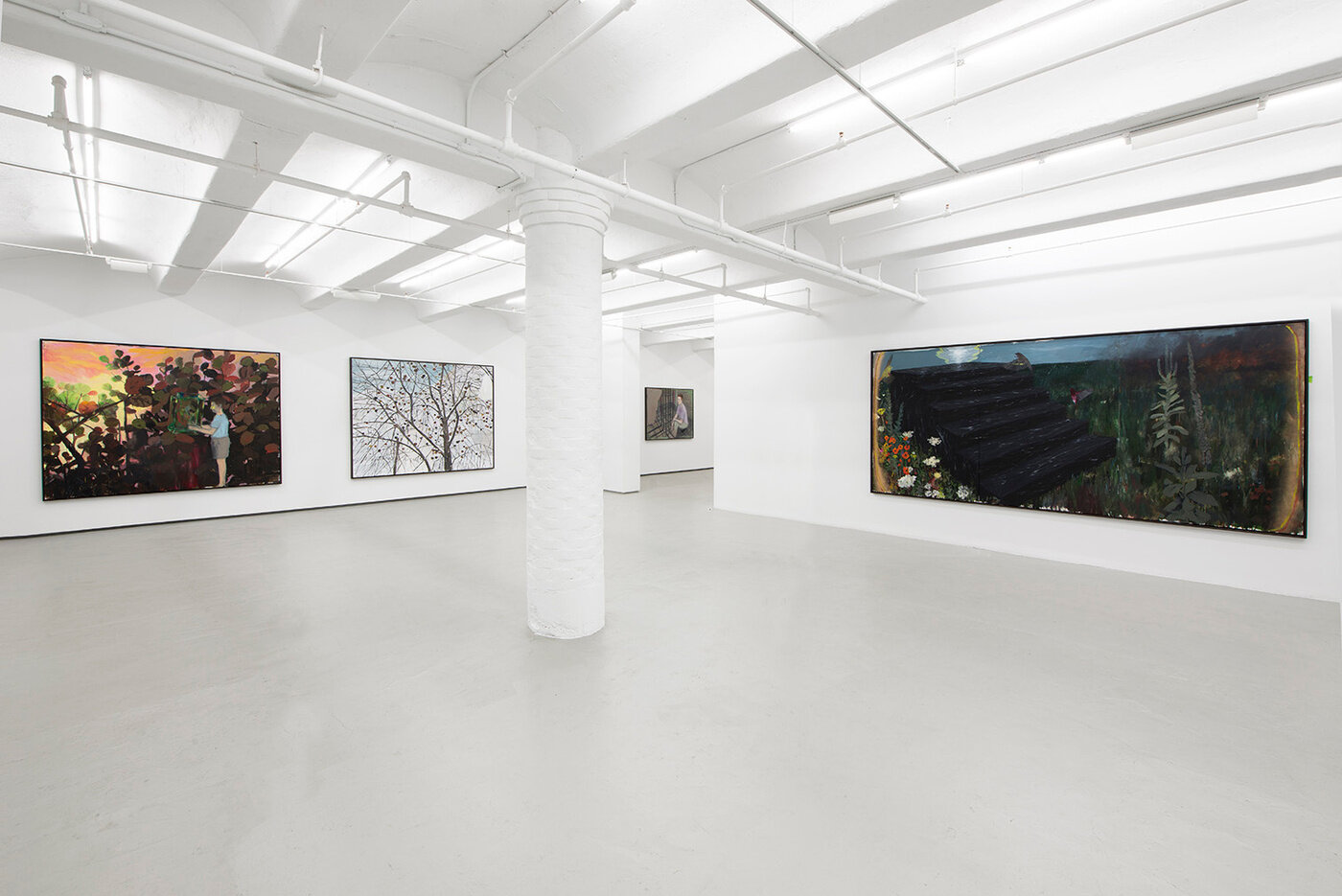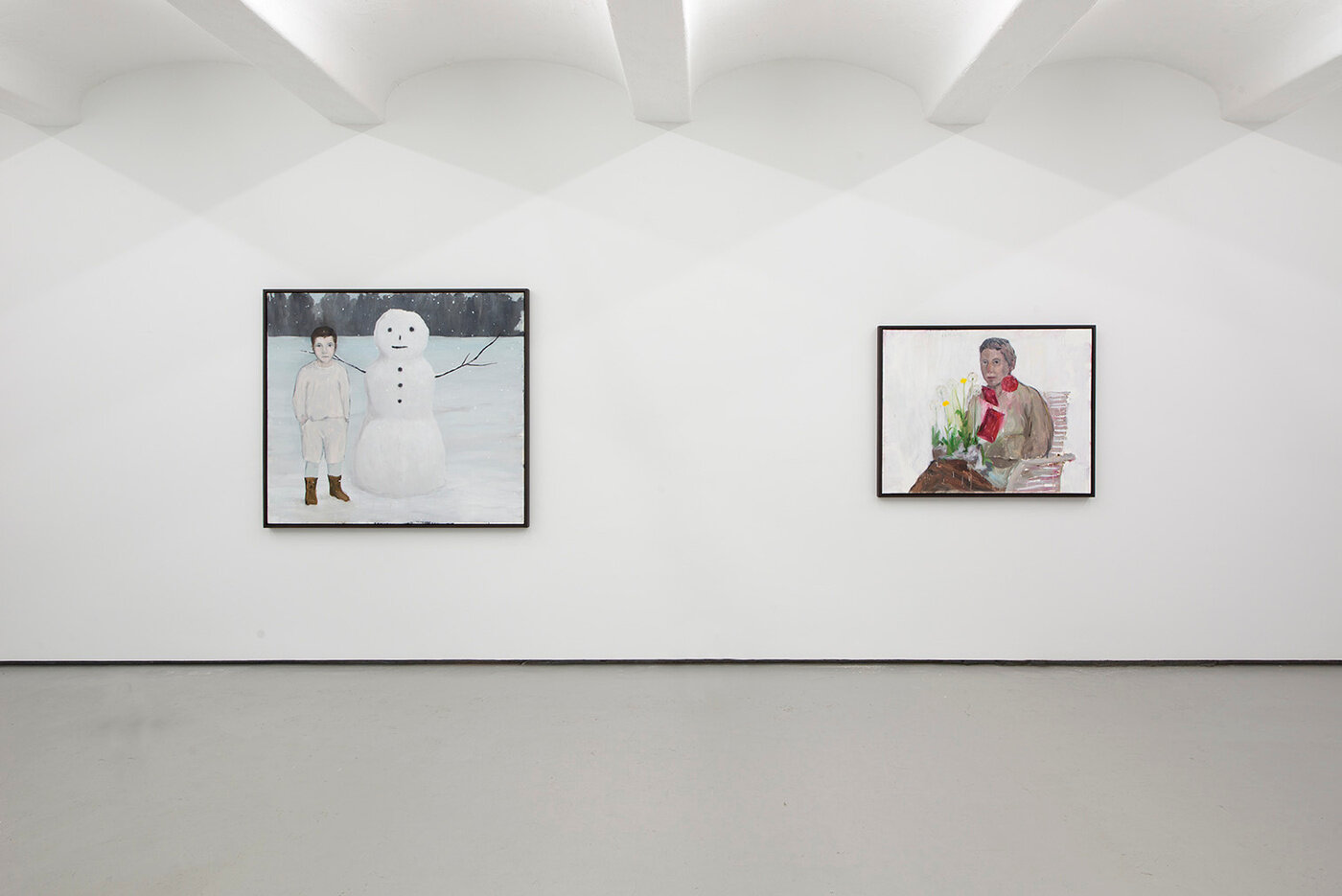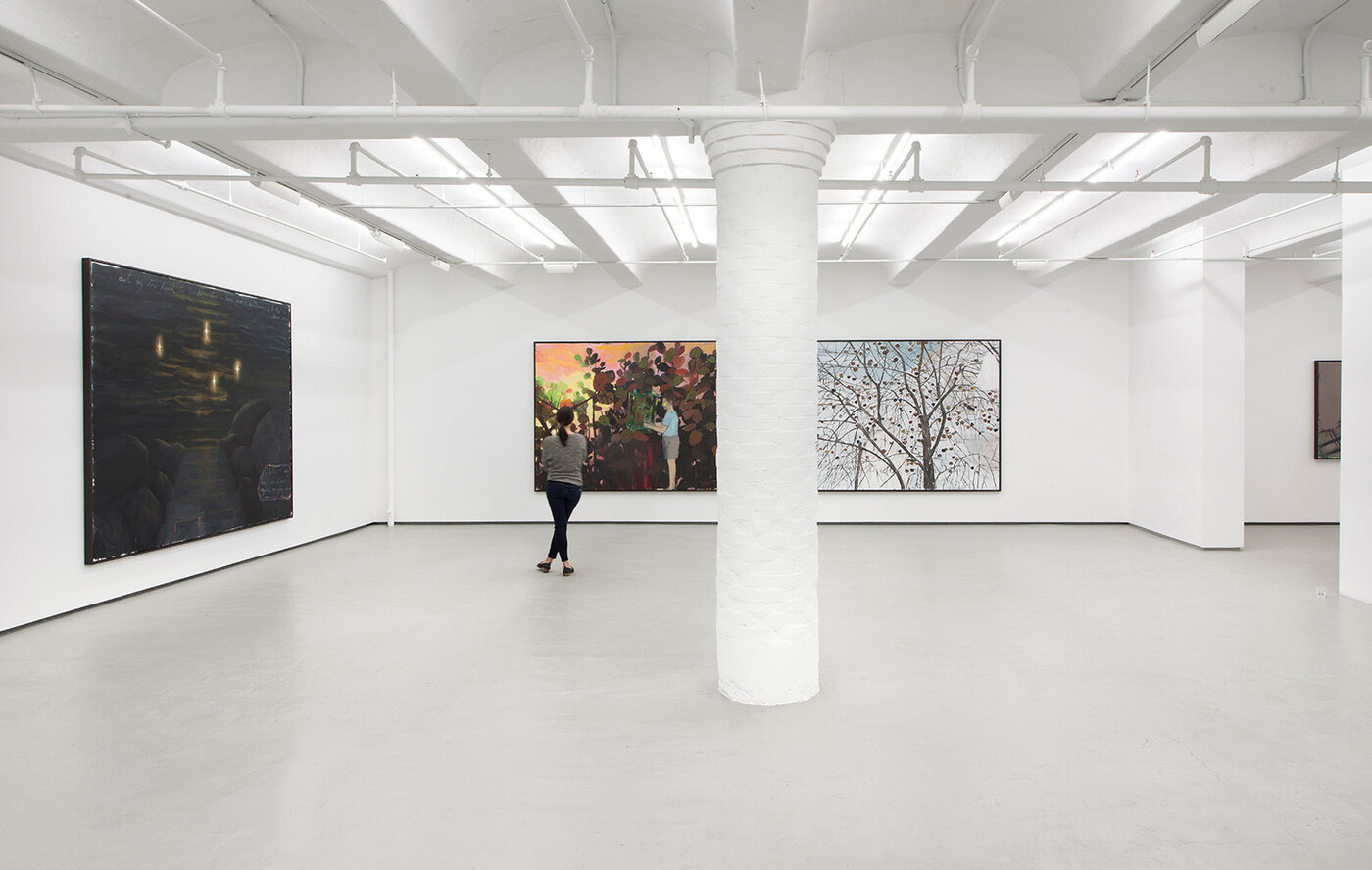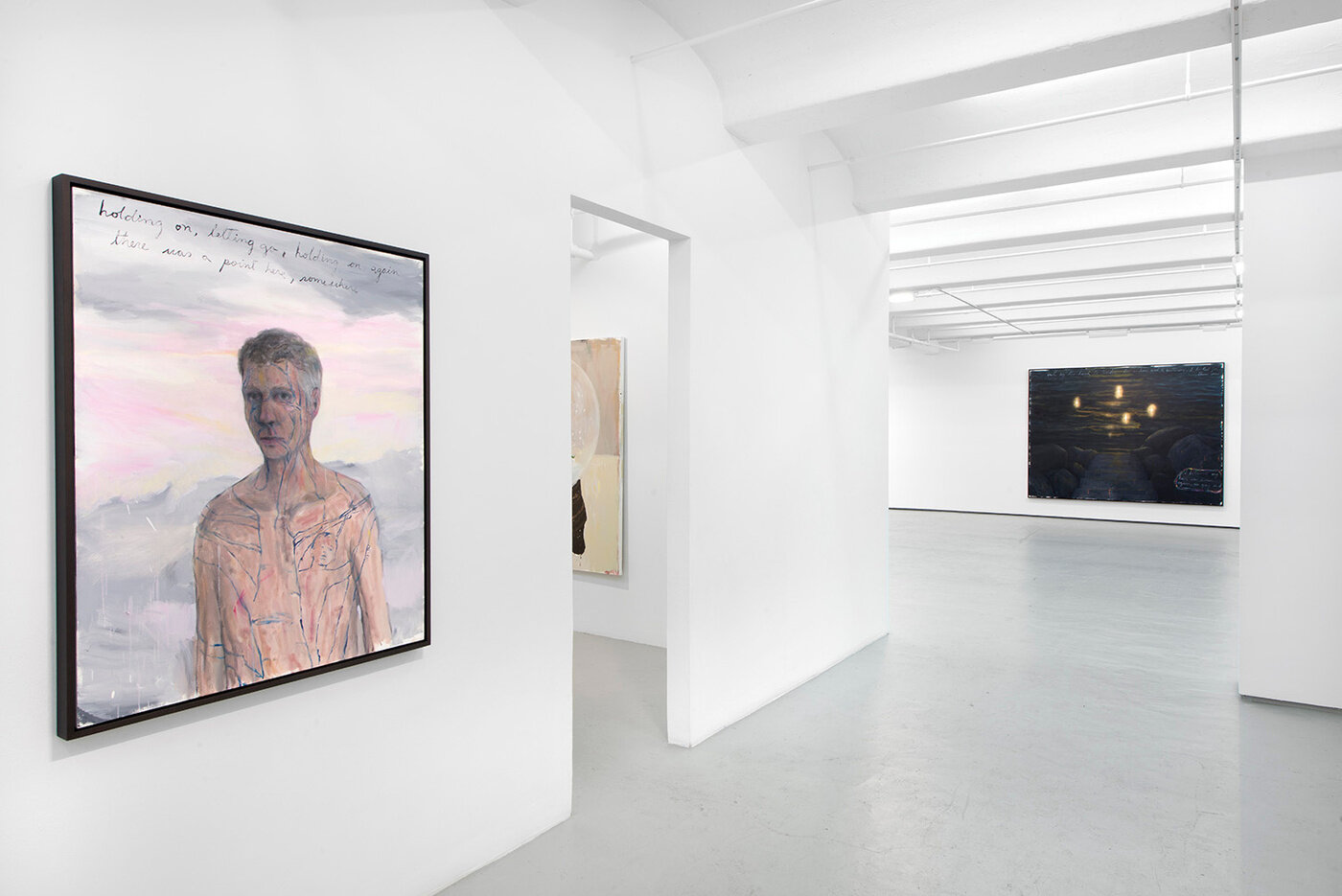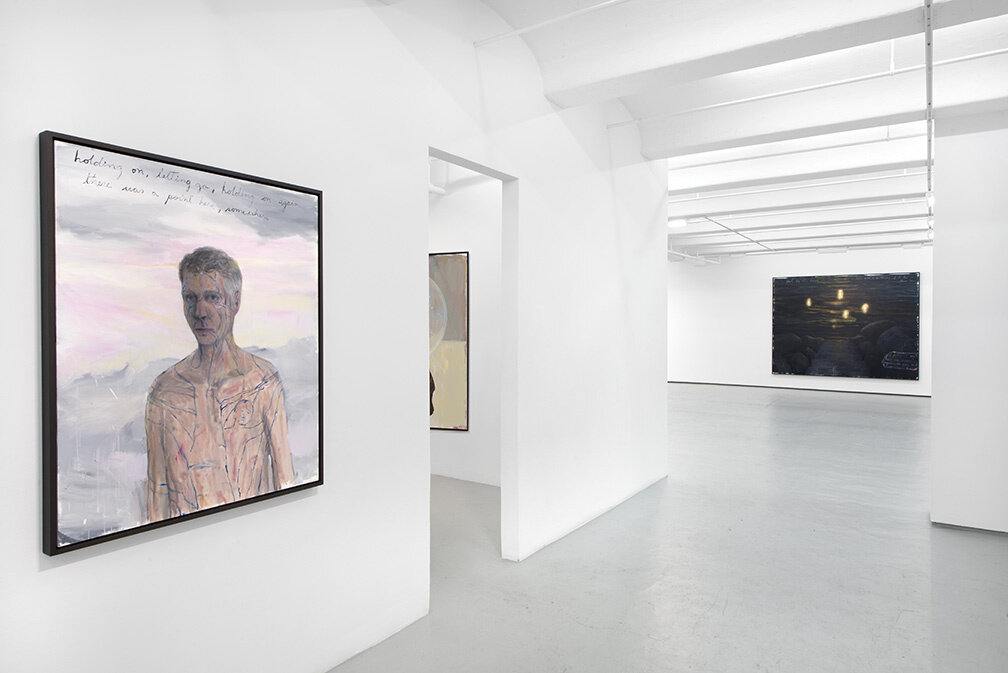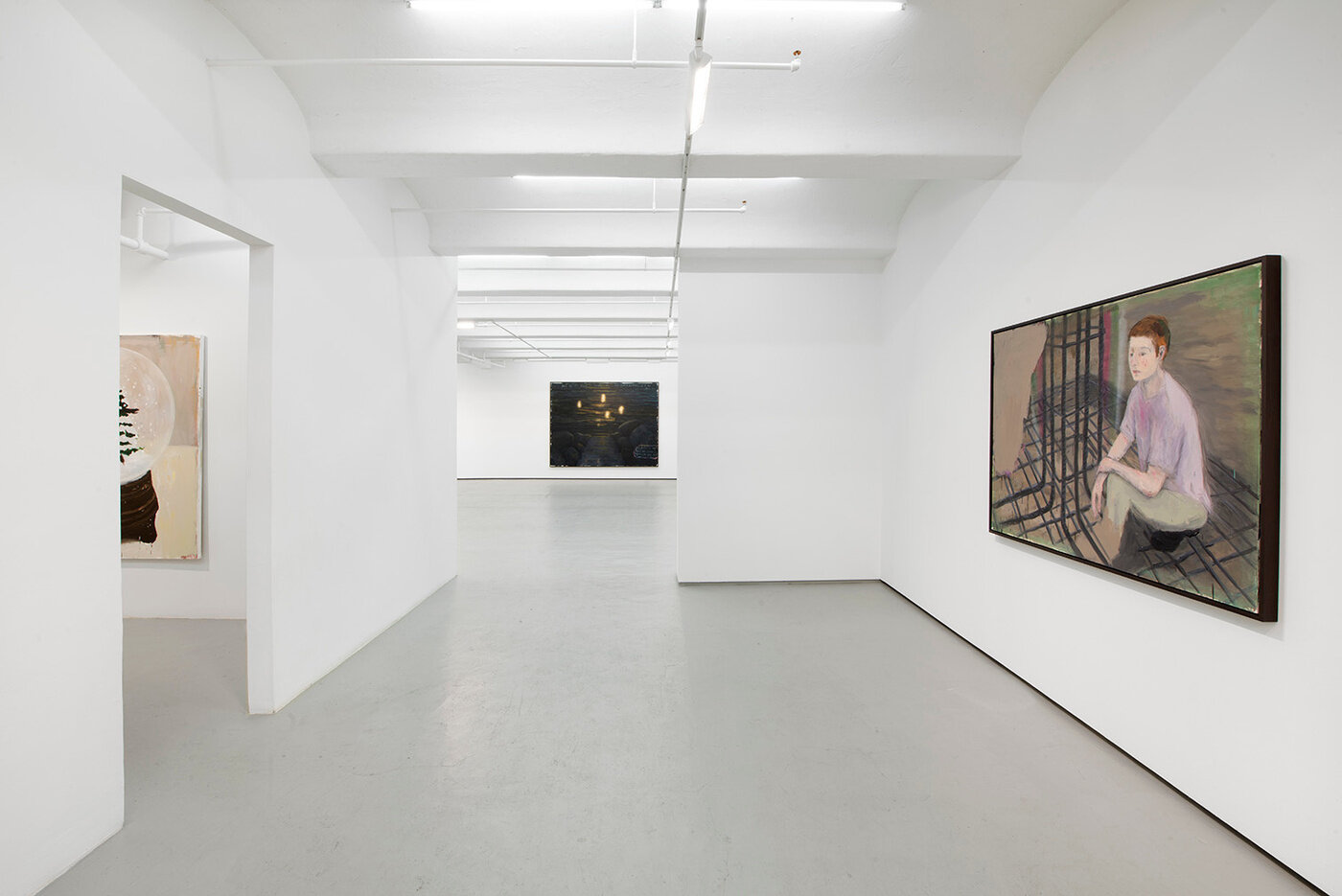Enrique Martínez Celaya: The Gypsy Camp
Works (Tap to zoom)
Press Release
ENRIQUE MARTINEZ CELAYA
The Gypsy Camp
March 16 – April 22, 2017
Please join us for an opening reception on Thursday, March 16, from 6 – 8 PM at 513 West 20th Street.
On Saturday April 1st at 5:30pm, the artist will be in conversation with Klaus Ottmann, Deputy Director for Curatorial and Academic Affairs at the Phillips Collection. The event will take place at 513 West 20th Street. Space is limited; kindly RSVP to jaci@jackshainman.com.
Jack Shainman Gallery is pleased to announce Enrique Martínez Celaya’s second solo exhibition at the gallery. With this new body of work, the artist inquires notions of ambition, loss, redemption, and the nature of painting.
Many of the paintings offer scenes of disrupted journeys or the aftermath of significant episodes: stairs abandoned in fields, snow globes as souvenirs from elsewhere, tattoos that historicize the body, a glass house lost in a cluster of firs, apples frozen and rotting in the tree, and the underlying structure of columns left unfinished. These moments of abandonment and failure also contain the seed of possibility and renewal whose hopefulness echoes the artist's informed but non-cynical approach to art in general and to painting in particular. In The Folktale (2017), marble stairs are isolated in a grassy clearing; they don’t appear to lead anywhere and a fire burns in the distance, but colorful wildflowers sprout, birds flutter, and sunlight ripples suggesting hope and rebirth.
Nature is a theme throughout Martínez Celaya’s work. Trees recur often as stoic markers of the passage of time. Shelters are also a motif, signaling human presence amidst the rawness of the elements. The Accountant (2016) unites the manmade with its environment. The dwelling is rendered in clear glass or possibly ice, bringing attention to its mechanism of support and to the way it distorts its surroundings, encouraging the viewer to reflect not only on the image, but on the intellectual processes that underlie the work of art and the experience of looking itself.
In this sense, the juxtaposition of sometimes disparate references—for example, roses and rebar—evokes a poetic quality, yet resists identification with any specific narrative. Rather, the works refer to their own making and particular emphasis is given to the canvas’ surface and the physicality of paint; borders are left undefined, pigment smeared. Martínez Celaya, describing the ineffable quality of his work, stresses presence over referent: “The conviction of the scenes is put in question by the way the paint doesn’t reach the edges. This quality of the edges also problematizes the ‘framing’ of the world suggested by the paintings—my paintings are not windows to a world but all that there is.”
Enrique Martínez Celaya has exhibited extensively throughout the United States and internationally. Recent solo exhibitions include presentations at the Phillips Collection, Washington D.C., Abroms-Engel Institute for the Visual Arts, Birmingham, Alabama, SITE Santa Fe, New Mexico, and the Hood Art Museum, Dartmouth College, where he is this year's Roth Distinguished Scholar.
Martínez Celaya’s work can be found in the permanent collections of the Metropolitan Museum of Art; the Whitney Museum of American Art; the State Hermitage Museum in St. Petersburg, Russia; the Museum of Contemporary Art in Los Angeles; the Museum of Fine Art Houston; the Denver Art Museum; the Moderna Museet in Stockholm, Sweden; and the Museum der bildenden Künste in Leipzig, Germany, among others.
He has received many awards including the National Artist Award from the Anderson Ranch Arts Center, the Montgomery Fellowship at Dartmouth College, the California Community Foundation Fellowship, J. Paul Getty Trust Fund for Visual Arts, a Knight Foundation Grant, and the Young Talent Award from the Los Angeles County Museum of Art. Formally trained in science as well as art, Martínez Celaya studied Applied & Engineering Physics at Cornell University and pursued a Ph.D. in Quantum Electronics at the University of California, Berkeley. He later received a Skowhegan Fellowship to attend the Skowhegan School of Painting & Sculpture in Maine and earned a Master of Fine Arts with the department's highest distinction from the University of California, Santa Barbara.
Martínez Celaya is the author of many publications including Work and Documents: 1990-2015 published by Radius, Collected Writings and Interviews 1990-2010 published by the University of Nebraska Press, On Art and Mindfulness co-published by Whale & Star Press and the Anderson Ranch Arts Center, October, published by Cinubia, and the artist book Guide, which was later serialized by the magazine Works & Conversations.
Concurrently on view at our 24th Street space is The Past is Present, a group exhibition featuring Brad Kahlhamer, Turiya Magadlela, and Hank Willis Thomas. Upcoming exhibitions at the gallery include Becky Suss at 513 West 20th Street and Gehard Demetz at 524 West 24th Street opening April 27th and on view through June 3rd.
Gallery hours are Tuesday through Saturday from 10am to 6pm. For additional information and photographic material please contact the gallery at info@jackshainman.com.


